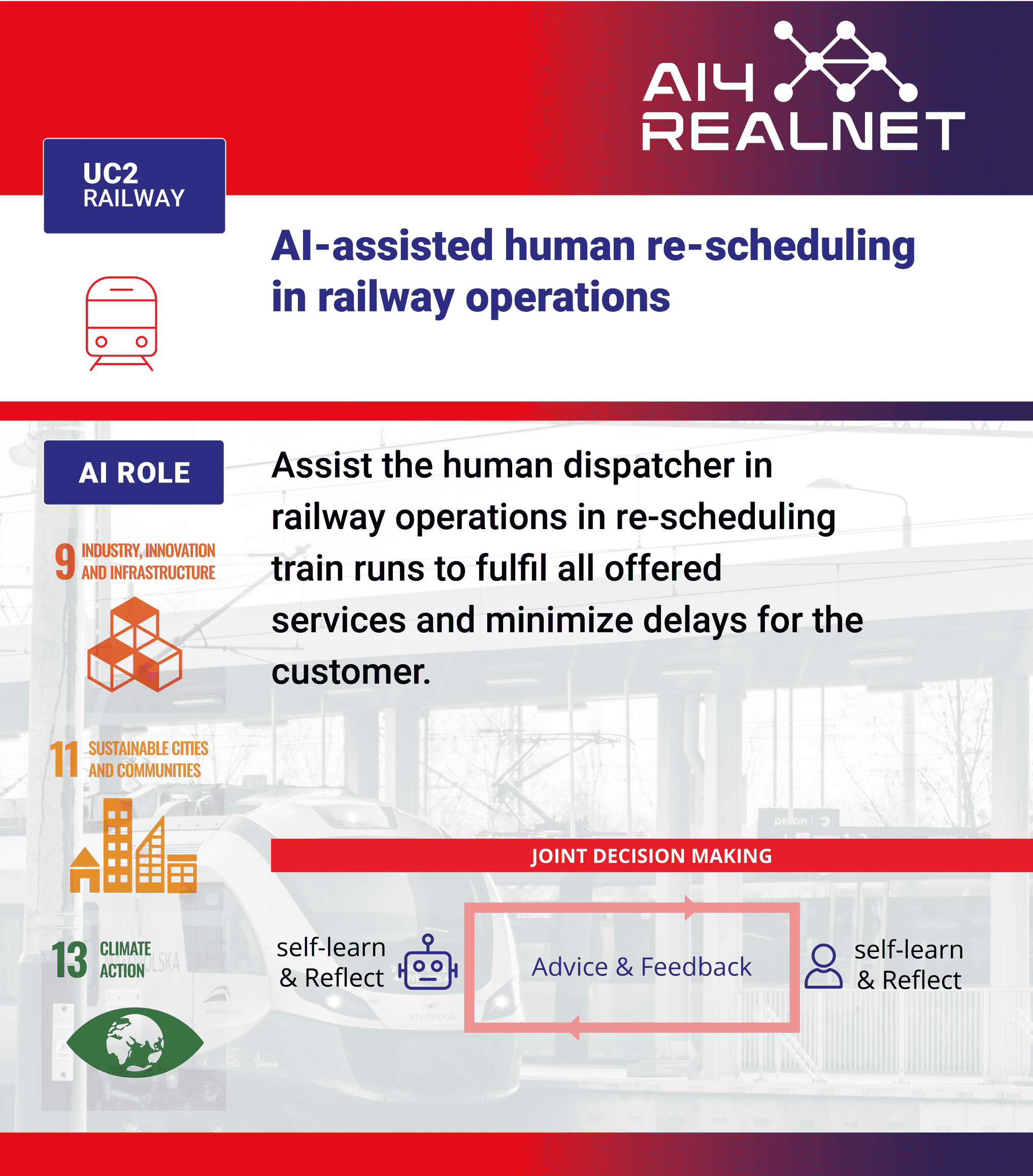Railway Network Use Case 2
AI-assisted human re-scheduling in railway operations
Context and motivation: The human train dispatchers rely on a computerised dispatching system to help them plan and monitor train movements. However, unexpected disruptions, such as signal failures, track blockages, or weather events, can cause significant delays and disruptions to the train schedule. In the event of a disruption, dispatchers must quickly decide to reschedule trains and minimise the impact on passengers and freight. This can be complex and time-consuming, especially considering the intricate network of tracks, train priorities, and passenger demand. An AI assistant can support the human dispatcher in analysing the real-time state of all the trains and tracks in the dispatcher’s area and derive possible dispatching options in case of deviations from the pre-planned schedule.
Problem formulation: In railway operations, traffic on the network is planned to fulfil the intended service contracted with the Railway Undertaking Operating Managers. When a disruption or deviation occurs, a dispatcher needs to become aware of the situation, analyse it, and decide to fulfil the requested services as close as possible to the pre-planned schedule. In this use case, the dispatcher should be supported by an AI-assisted system to choose some actions, e.g., changing the speed, order, or routes of trains. The support system takes the state of all trains in the dispatcher’s control area as input and suggests options, i.e., sets of actions, to the dispatcher.
Stakeholders: Railway network operators, network supervisors, railway undertaking operation managers, passengers, government, and society.
Threats and vulnerabilities: Accountability, who is responsible for delays and, in general, bad performance of the AI system. Risk of malicious actors disrupting operations either through the disabling or disruption of the AI system or by influencing system to produce output that causes delays, accidents, etc.
Key benefits: Improve punctuality of trains; increase the speed in response to disruptions or changes; better use of the available capacity in the railway network.
Download the Use Case file to see the complete description!
